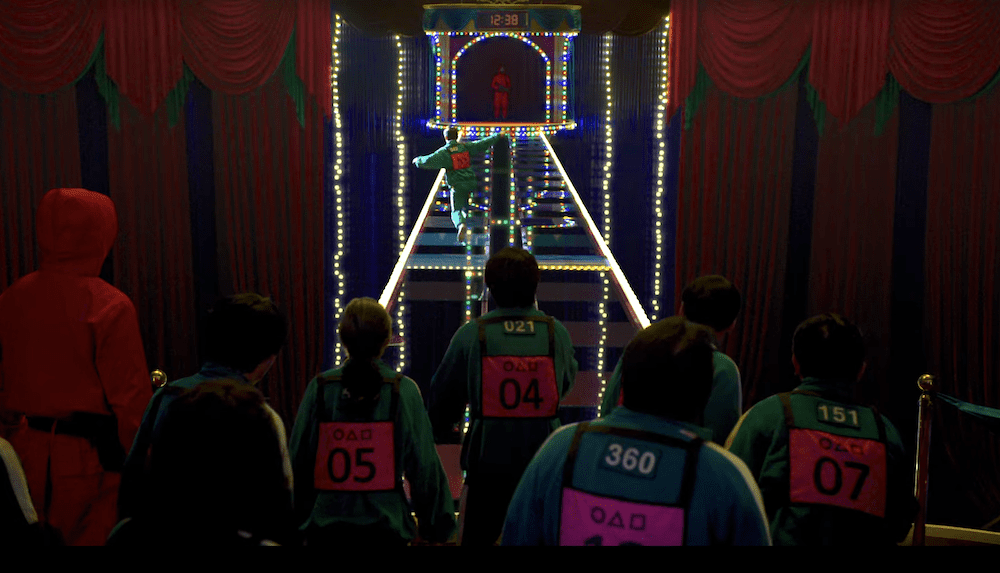
[Image above] Players in the hit show Squid Game attempt to cross a bridge made of regular and tempered glass panels. Credit: Abhijatya Gupta, YouTube
If you have Netflix, chances are high you’ve seen at least one episode of Squid Game.
Squid Game is a South Korean survival drama television series that involves hundreds of cash-strapped players accepting a strange invitation to compete in children’s games for a monetary prize. Since its release on Netflix in September, the show has skyrocketed in popularity, to the point South Korean internet service provider SK Broadband sued Netflix to pay for costs from increased network traffic and maintenance work.
I binged the series when it came out, and I can’t tell you how exciting it was to reach episode seven and discover it featured a topic near and dear to my heart—glass science!
In this episode, the players attempted the fifth out of the total six games. Known as the Glass Bridge Game, players had to hop across a suspended bridge lined with panels of either regular or tempered glass. If they chose correctly, they would land on tempered glass and be safe. If they chose wrong, however, they would land on regular glass, which would break and cause them to fall to their deaths.
Partway into the game, one of the players reveals he worked in a glass factory for many years and could tell the difference between tempered and regular glass—but would the techniques that he claimed to use work in real life?
First, let’s establish the difference between regular (annealed) and tempered glass. Tempered glass is a type of safety glass that undergoes either controlled thermal or chemical treatments to increase its strength. Thermal treatment involves heating and then cooling the glass rapidly to introduce stress into its surface. In contrast, regular glass is thermally treated and then cooled slowly to relieve internal stresses.
The first technique the glass maker claimed to use was looking for stain marks in the tempered glass. Though what is meant by “stains” is not clear, Andrew Taylor, managing director of Specialist Glass Products, says in a blog post that the show could be referring to anisotropy.
“In certain polarized lighting, you may find anisotropy, a leopard spot-like effect … [This effect is] caused by the introduction of stress and tension to the glass. Although it may be tricky to see in natural light, these stains are noticeable under bright and polarized light,” he explains.
In addition to how light reacts with the glass, Taylor adds that the glass surface could be another useful indicator. “Nontempered glass is always perfectly flat. Sometimes with tempered glass you may get slight roller wave, which would show in certain lighting at certain angles,” he says.
When the game masters realized the players were using light to determine safe passage, they turned off the lights. At that point, the glass maker claimed sound would allow him to tell the difference because, according to him, tempered glass rings clearer than normal glass when hit.
According to Taylor, this technique has less basis in reality. “Although this theory seems plausible, Andrew advised this is not something he is aware of, adding, ‘tapping glass you’re standing on with a hammer to see if its tempered is probably not advisable,’” the blog post reads.
So, if you wish to cross the glass bridge safely, you will need to hope the game masters don’t turn off the lights, or you are positioned near the back of the line. Because if you are near the front, the odds are definitely not in your favor, as the math teacher in the clip below shows.

